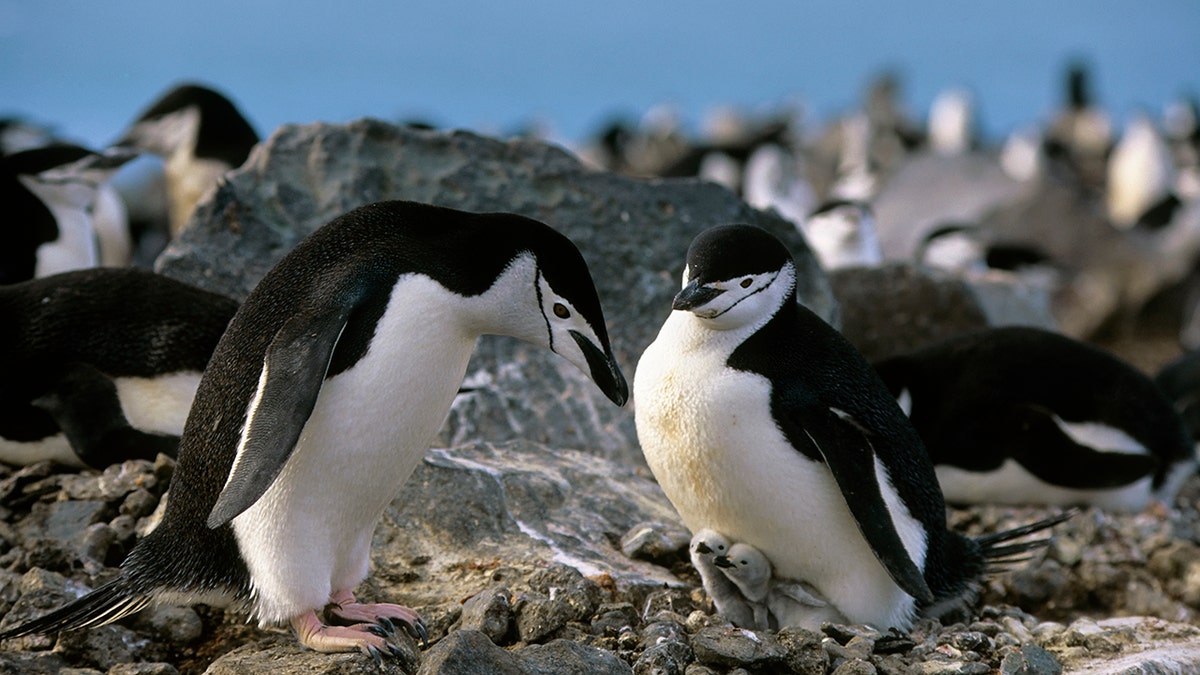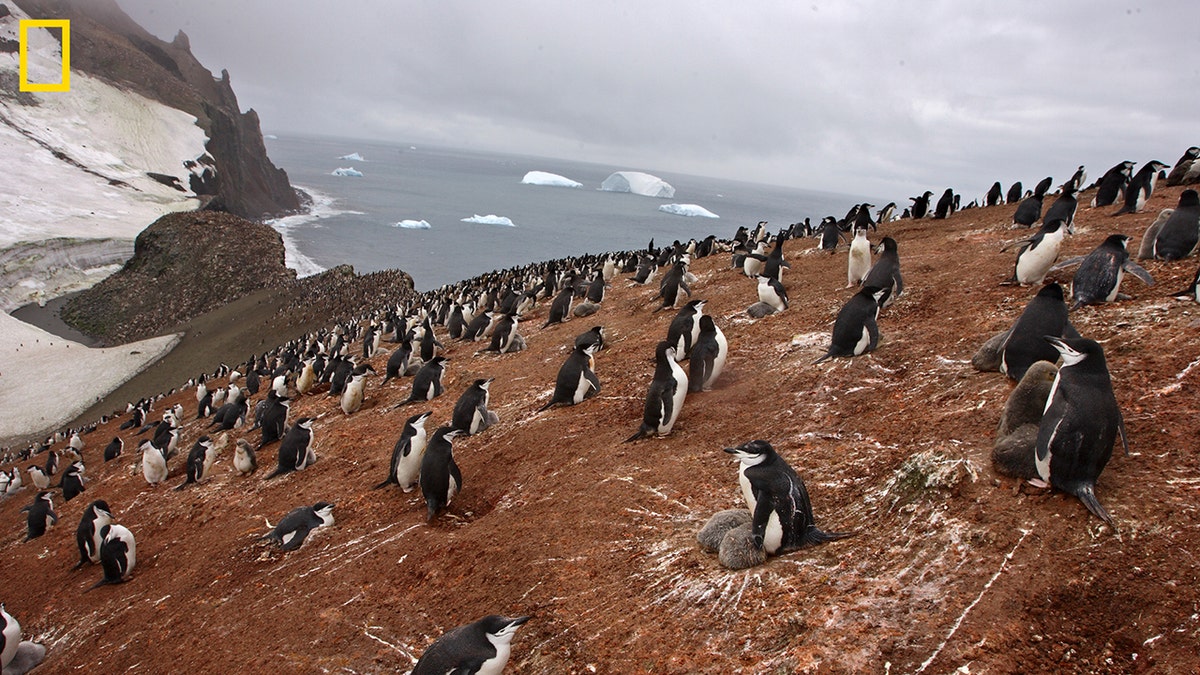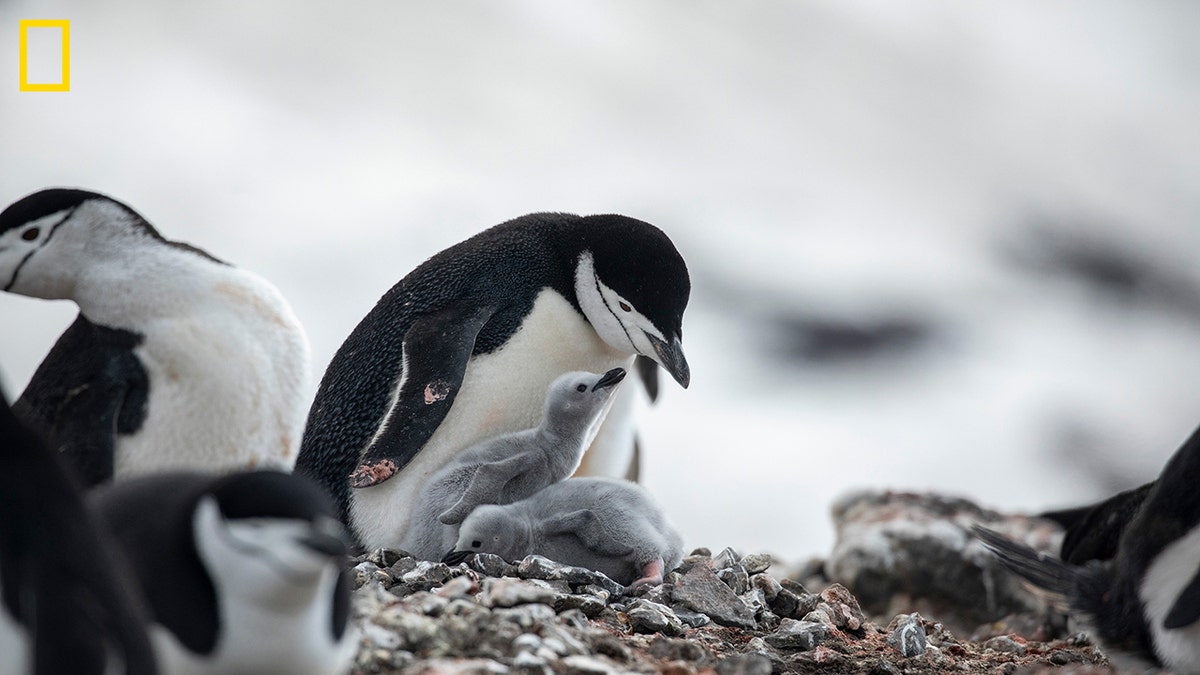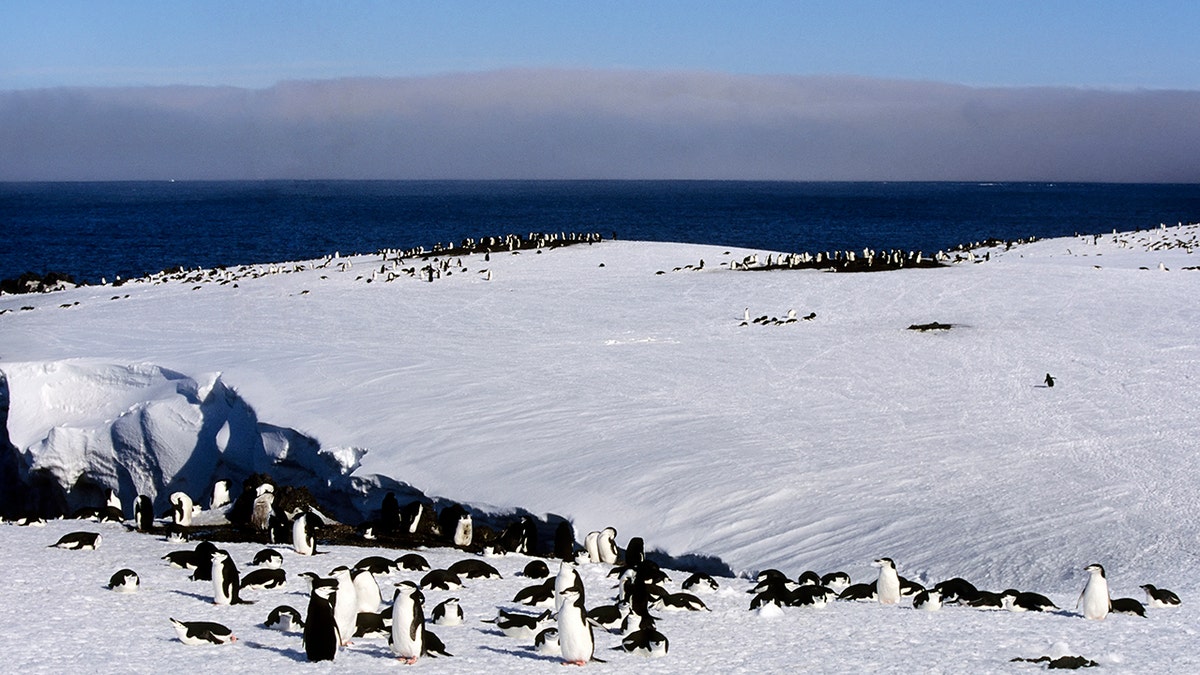Most parents of little ones function with a sleep deficit — but some penguins have figured out a way to catch more Zzzs.
Nesting chinstrap penguins take more than 10,000 mini naps per day, according to a new study published in the journal Science.
These micronaps last for about four seconds each, enabling the Antarctic penguins to catch a quick snooze while still managing their chicks.
NATIONAL GEOGRAPHIC RELEASES ITS ‘PICTURES OF THE YEAR’: SEE SOME OF THE JAW-DROPPING SHOTS
Researchers from multiple countries, led by the Neuroscience Research Center of Lyon in France, conducted the study by breeding chinstrap penguins and using remote electroencephalogram (EEG) monitoring, which detects changes in brain activity.
The 10,000 four-second naps add up to 11 hours of sleep throughout the day, which researchers consider adequate slumber for penguin parents.

A pair of chinstrap penguins are pictured at a nest with their newly hatched chicks at Penguin Island in Antarctica. (Wolfgang Kaehler/LightRocket via Getty Images)
“If microsleeps do fulfill sleep functions, then animals faced with a continuous need for vigilance might resort to this sleep strategy,” the study suggested.
This was the first study to demonstrate that an animal can function with such small bouts of sleep, according to study co-author Paul-Antoine Libourel, a researcher at the French CNRS in the Neurosciences Research Center of Lyon.
ENDANGERED ZEBRA SHARK TO BE RELEASED BACK INTO OCEANS IN FIRST-EVER INTERNATIONAL ‘RE-WILDING’ EFFORT
“They are able to perform their sleep needs by accumulating 600 bouts of four-second sleep per hour, which is more than 14,000 bouts of sleep a day,” he said.
Even though microsleeping has been reported in other species, including humans, Libourel said it was still “unusual” to detect this sleep pattern in penguins.

Penguin parents share egg-sitting duties, each spending several days on the nest before a shift change. After about 37 days, the chicks hatch. (Maria Stenzel, Nat Geo Image Collection)
“Usually, other animals who have microsleeps do it during a transition to a more consolidated sleep,” he said.
“It seems that the chinstrap penguins were able to maintain such sleep fragmentation without any obvious physiological cost, as they successfully breed their chicks.”
The researchers believe this type of sleep “could be an adaptation to face the need to remain vigilant and protect their egg and still have the benefit of sleeping.”
IS SEEING A BLACK CROW AN ‘OMEN OF DARKNESS’? WHAT IT COULD MEAN WHEN YOU COME ACROSS THE MYSTERIOUS BIRD
National Geographic senior editor Christine Dell’Amore in Washington, D.C., who was not involved in the study, commented on these findings in an exchange with Fox News Digital.
Many human parents can “relate to how challenging it can be to get enough sleep with a little one,” she said.

A chinstrap penguin tends to its chicks at Antarctica’s South Shetland Islands. (Acacia Johnson, Nat Geo Image Collection)
“The fact that this penguin species has figured out this clever strategy of micronapping is very impressive,” said Dell’Amore.
She added that these penguins accumulating up to 11 hours of sleep total is “not too shabby.”
“It’s also very relatable research, since it shows how our problems are often similar to those of wild animals: All parents, regardless of their species, need sleep.”
“All parents, regardless of their species, need sleep.”
Libourel, however, discouraged humans from attempting to “sleep like a penguin,” warning that this type of fragmented sleep is known to be “deleterious for humans.”
“However, having minute-long (not second-long) naps is known to be beneficial for people,” he added.

Chinstrap Penguins are pictured at nest sites in spring at South Sandwich Island, Antarctica. (Wolfgang Kaehler/LightRocket via Getty Images)
Dell’Amore said these tiny naps benefit chinstrap penguin parents who are “busy” while taking turns caring for their two nestlings in their native Antarctica, which is “the coldest, driest and windiest place on Earth.”
She added, “They have to constantly find food in the ocean and keep their chicks warm, so taking thousands of tiny naps a day allows them to get enough sleep to function.”
CLICK HERE TO SIGN UP FOR OUR LIFESTYLE NEWSLETTER
Summers in Antarctica also have 24/7 sunlight, according to National Geographic — so that’s an extra element of sleeping difficulty, in addition to living in large packs of hustling and noisy birds.
Since the study researched only nesting penguins, Dell’Amore said it’s likely that non-parent chinstraps don’t nap as frequently.

A chinstrap penguin is seen on Antarctica’s Livingston Island with its newly hatched chick. (Wolfgang Kaehler/LightRocket via Getty Images)
“That makes sense, since they don’t have the stresses of parenting to contend with,” she said.
Libourel confirmed that researchers do not know if chinstrap penguins microsleep when they are not incubating, but he said it would be “very interesting to know.”
CLICK HERE TO GET THE FOX NEWS APP
Dell’Amore added some more details about the behavior of chinstrap penguins, noting that they’re “fast, zipping through water at 20 miles an hour.”
She said, “They fill their bellies with krill, a type of tiny crustacean, then when they’re back at their nests, they regurgitate their food for their young.”
More on chinstrap penguins and this story can be found at nationalgeographic.com.
For more Lifestyle articles, visit www.foxnews.com/lifestyle.
